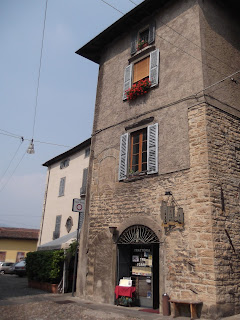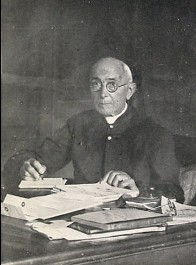Prolific painter left a rich legacy of religious works in Bergamo
 |
| Frescoes by Giovanni Paolo Cavagna illuminate the dome of Santa Maria Maggiore |
Cavagna was mainly active in Bergamo and Brescia, for
most of his career, although he is believed to have spent some time training in
Venice in the studio of Titian.
The artist was born in Borgo San Leonardo in the Città Bassa in about 1550. The
painter Cristoforo Baschenis Il Vecchio is believed to have taken him as an
apprentice from the age of 12. Cavagna is also thought to have spent time as a
pupil of the famous Bergamo portrait painter Giovanni Battista Moroni.
Cavagna’s work can still be seen in many churches in
Bergamo and villages in the surrounding area. In the Basilica of Santa Maria
Maggiore in the Città Alta there are paintings by him of the
Assumption of the Virgin, the Nativity, and Esther and Ahasuerus.
In the Church of Santa Spirito in the Città
Bassa, there are his paintings of Santa Lucia and the Crucifixion with Saints.
He painted a Coronation of the Virgin for the Church of San Giovanni Battista
in the province of Casnigo, which is to the north east of Bergamo, and some of
his paintings can also be seen in the sanctuary of the Madonna del Castello in
Almenno San Salvatore, a province to the north west of Bergamo.The Church of Santa Spirito in the
Città Bassa has works by Cavagna
The artist also completed a painting of the Crucifixion
for the Church of Santa Lucia in Venice.
Cavagna’s son, Francesco, who became known as
Cavagnuola, and his daughter, Caterina, also became painters.
After his death in Bergamo in 1627, Cavagna was buried
in the Church of Santa Maria Immacolata delle Grazie in the Città
Bassa, but after the reorganization of the lower town in the 19th century, the
church was rebuilt and Cavagna’s tomb had to be moved, and it is now uncertain
what happened to it.
.JPG)
.PNG)
.png)
















